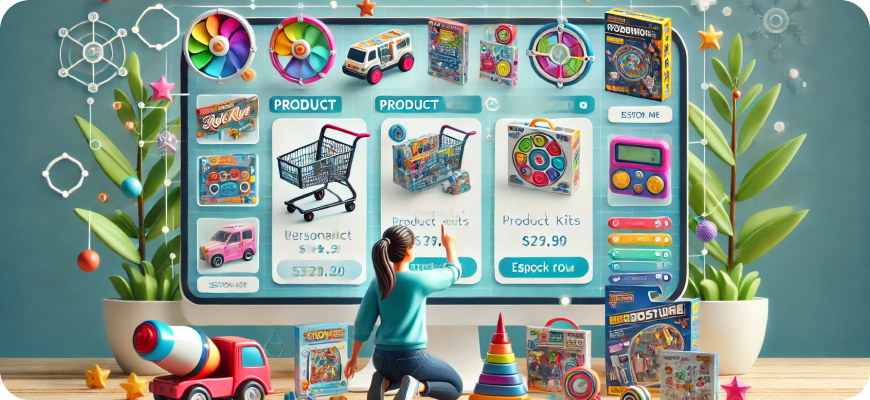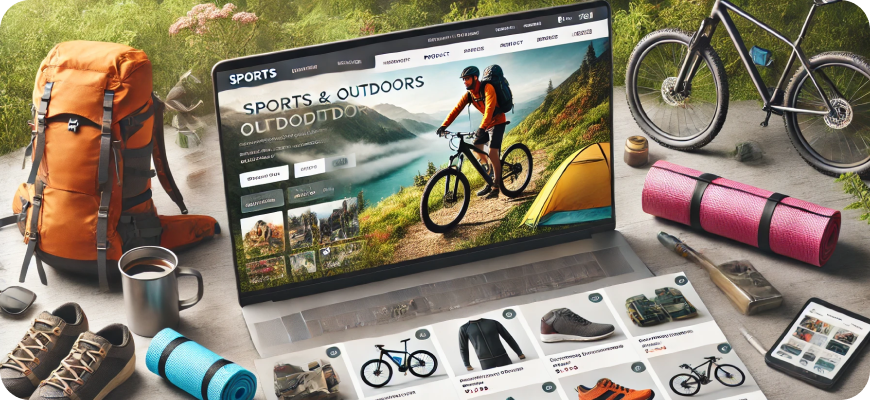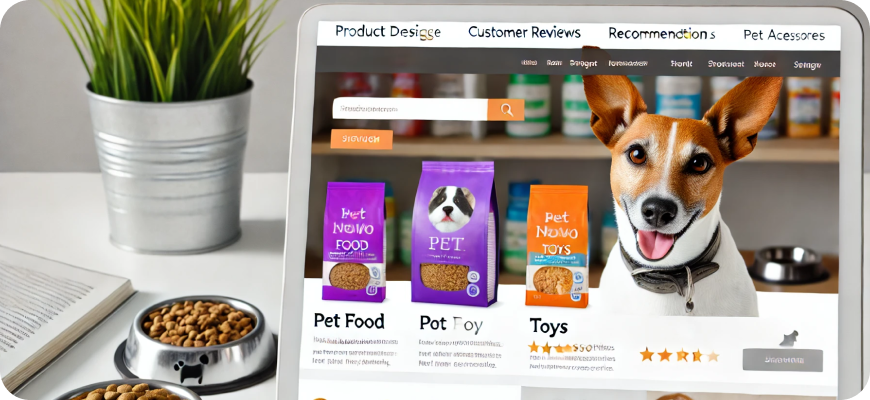Ecommerce Best Practices for Food & Beverages
The food and beverages e-commerce industry has experienced rapid growth over the past few years. From online grocery delivery services to artisanal snack boxes, the sector offers convenience and variety that modern consumers crave. However, selling food and beverages online comes with unique challenges, including perishability, strict regulatory requirements, and the need to build trust around product quality. To stand out in this competitive space, e-commerce businesses must focus on building customer loyalty, providing an excellent shopping experience, and ensuring product safety and freshness.
Here is a comprehensive guide to e-commerce best practices for food and beverage businesses.
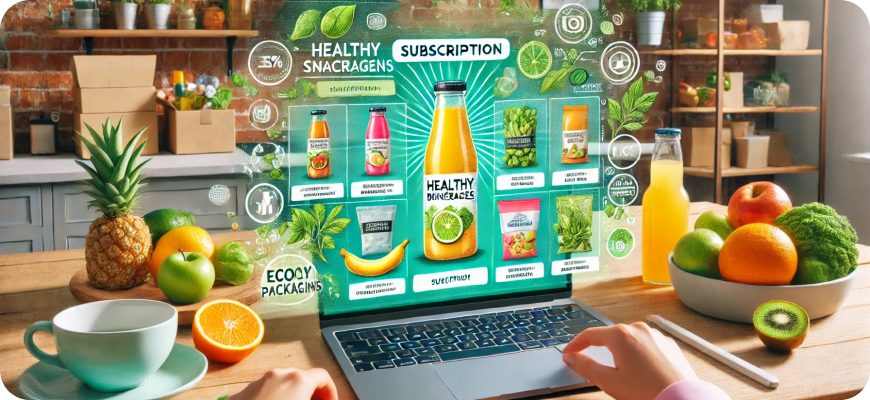
1. Prioritize High-Quality Product Images and Descriptions
The absence of an in-person experience means your visuals and descriptions must create a sensory connection:
- High-Quality Images: Use high-resolution images that capture your products from multiple angles, including close-ups of textures, packaging, and portion sizes.
- Lifestyle Imagery: Include images of your products in real-life settings, such as beautifully plated meals, family gatherings, or chefs in action. This helps customers visualize how they can enjoy your products.
- Descriptive Product Information: Provide detailed product descriptions that include ingredients, nutritional information, serving sizes, and any potential allergens. Highlight the benefits, such as organic certification, gluten-free status, or unique flavors.
2. Offer Subscription Models and Repeat Orders
Subscription services work particularly well for food and beverage products that are consumed regularly:
- Convenience for Recurring Orders: Offer subscription models that allow customers to receive their favorite products automatically at regular intervals.
- Flexible Options: Provide options for customers to pause, skip, or customize their subscriptions to ensure convenience and satisfaction.
- Exclusive Perks for Subscribers: Entice customers with special perks for subscribers, such as discounts, early access to new products, or exclusive flavors.
3. Provide Robust Shipping and Delivery Solutions
Shipping food and beverages requires careful planning to ensure freshness, safety, and timely delivery:
- Temperature-Controlled Shipping: For perishable items, offer temperature-controlled shipping options such as insulated packaging, ice packs, or expedited shipping.
- Clear Shipping Policies: Be transparent about shipping costs, delivery times, and any restrictions based on product type or location.
- Real-Time Tracking: Provide customers with real-time tracking so they can monitor their orders from dispatch to delivery.
4. Optimize for Mobile Shopping
Mobile shopping has become a significant channel for online food and beverage purchases:
- Responsive Design: Ensure your website offers a smooth browsing experience on mobile devices with an intuitive layout, touch-friendly buttons, and fast loading times.
- Mobile Checkout Process: Simplify the checkout process with auto-fill options, one-click payment solutions, and support for digital wallets like Apple Pay and Google Pay.
- App-Based Loyalty Programs: Consider developing a mobile app that offers personalized experiences, loyalty rewards, and app-exclusive promotions.
5. Focus on Building Trust and Transparency
Building trust is critical when selling consumables online:
- Transparent Sourcing: Clearly communicate where your ingredients come from and how your products are made. Share stories about your suppliers, sustainable farming practices, or artisanal production methods.
- Customer Reviews and Testimonials: Encourage customers to leave reviews and testimonials about their experiences with your products. Display these reviews prominently to provide social proof.
- Certifications and Labels: Highlight certifications such as USDA Organic, Non-GMO Project Verified, or Fair Trade, and explain what these labels mean.
6. Provide Customization and Personalization Options
Personalized experiences resonate deeply with customers:
- Customized Products: Allow customers to personalize items, such as selecting flavors, creating custom meal kits, or building their own snack boxes.
- AI-Driven Recommendations: Use AI to analyze customer behavior and suggest personalized product recommendations, such as complementary flavors or exclusive bundles.
- Targeted Marketing Campaigns: Send personalized emails and offers based on customer preferences, past purchases, or seasonal trends.
7. Highlight Sustainability and Eco-Friendly Practices
Consumers are increasingly interested in brands that prioritize sustainability:
- Sustainable Packaging: Use eco-friendly packaging materials, such as biodegradable or compostable options, and clearly communicate this commitment to your customers.
- Waste Reduction Programs: Offer initiatives like reusable packaging, recycling incentives, or programs that allow customers to donate excess food items.
- Ethical Sourcing: Highlight ethical sourcing practices, such as partnerships with fair trade farmers or commitments to animal welfare standards.
8. Leverage Content Marketing and SEO
Content marketing can help you engage with customers, build brand authority, and drive organic traffic:
- Recipe Ideas and Pairing Suggestions: Create blog posts or videos showcasing recipes, pairing ideas, and ways to use your products.
- Educational Content: Write about food trends, nutritional benefits, sustainability topics, and cooking tips to position yourself as an industry expert.
- SEO Optimization: Target relevant keywords, such as “healthy meal delivery,” “artisanal snacks,” or “gluten-free desserts,” in your product pages, blogs, and metadata.
9. Provide Flexible Payment and Financing Options
Flexible payment options can make your products more accessible to a wider range of customers:
- Multiple Payment Methods: Offer various payment methods, including credit/debit cards, digital wallets, and bank transfers.
- Buy Now, Pay Later (BNPL) Services: Partner with BNPL providers like Klarna, Afterpay, or Affirm to let customers split payments over time.
- Subscription Payment Discounts: Provide discounts for customers who choose subscription services, encouraging repeat orders and boosting customer loyalty.
10. Optimize the Checkout Process
A smooth and intuitive checkout process can reduce cart abandonment:
- Guest Checkout Option: Allow customers to make purchases without creating an account.
- Progress Indicators: Display progress bars during the checkout process to reduce uncertainty and increase completion rates.
- Auto-Fill and Security Features: Use auto-fill for shipping and payment details and ensure robust security measures for customer data protection.
11. Provide Exceptional Customer Support
Responsive and reliable customer support is crucial for food and beverage businesses:
- Live Chat Support: Offer live chat for instant responses to customer inquiries about ingredients, shipping, or order issues.
- FAQ Section: Maintain a detailed FAQ section addressing common questions about your products, such as dietary concerns, allergens, and storage recommendations.
- Order Follow-Ups: Send follow-up emails after delivery to ensure customer satisfaction, encourage feedback, and provide product tips.
12. Leverage Social Media for Engagement and Growth
Social media is a powerful tool for building brand awareness and engaging with customers:
- Shoppable Posts: Use Instagram and Facebook to create shoppable posts, enabling customers to purchase directly from their social media feeds.
- Engaging Content: Share a mix of content, such as behind-the-scenes looks at production, cooking tutorials, and customer spotlights.
- Social Media Contests: Run contests encouraging customers to share photos of their meals or snacks using branded hashtags, rewarding participants with discounts or free products.
13. Use Email Marketing to Drive Retention
Email marketing is a powerful channel for nurturing and retaining customers:
- Welcome Series: Create a welcome email series for new customers that introduces your brand values, best-selling products, and exclusive offers.
- Abandoned Cart Reminders: Use automated emails to remind customers of items left in their cart, offering incentives like discounts to encourage completion.
- Segmentation and Personalization: Segment your email list based on purchase history, preferences, or dietary needs, and tailor campaigns to each segment.
14. Offer Loyalty Programs and Referral Incentives
Building loyalty is key to long-term success in the food and beverage market:
- Points-Based Rewards Program: Reward customers for every purchase, review, or referral, allowing them to redeem points for discounts or free products.
- Exclusive Member Perks: Offer loyalty members exclusive access to new product launches, special discounts, or early-bird sales.
- Referral Programs: Incentivize customers to refer friends by offering both parties rewards, such as discounts or complimentary products.
15. Implement Seasonal and Limited-Time Promotions
Promotions can drive excitement and boost sales:
- Holiday-Themed Offers: Create special promotions tied to holidays, such as Christmas, Valentine’s Day, or New Year’s health resolutions.
- Limited-Time Flavors or Editions: Introduce limited-time products or seasonal flavors to create a sense of urgency.
- Bundle Deals: Offer discounted bundles of complementary products, such as a snack pack or breakfast bundle.
16. Ensure Compliance and Food Safety Standards
Food and beverage e-commerce businesses must adhere to strict safety standards:
- Regulatory Compliance: Ensure your products meet all applicable regulations and standards, such as FDA guidelines in the U.S. or food safety regulations in your region.
- Clear Labeling: Accurately label all products, including ingredient lists, nutritional information, allergen warnings, and expiration dates.
- Product Recall Procedures: Have a clear procedure for addressing product recalls or safety issues to protect customer health and build trust.
17. Utilize Data Analytics for Continuous Improvement
Data-driven insights can help optimize your business:
- Customer Behavior Analysis: Use analytics tools to track customer behavior, such as browsing patterns, purchase frequency, and preferences.
- A/B Testing: Test different product pages, promotions, and marketing messages to find what resonates best with your audience.
- Retention Metrics: Monitor customer retention rates, repeat purchase rates, and churn rates to identify areas for improvement.
18. Emphasize Fast and Reliable Shipping
Shipping speed and reliability are critical for perishable items:
- Same-Day or Next-Day Delivery Options: Offer expedited shipping for fresh or time-sensitive products.
- Real-Time Tracking: Provide customers with real-time tracking information and updates throughout the shipping process.
- Subscription Delivery Preferences: Allow subscription customers to choose delivery dates and frequency for maximum convenience.
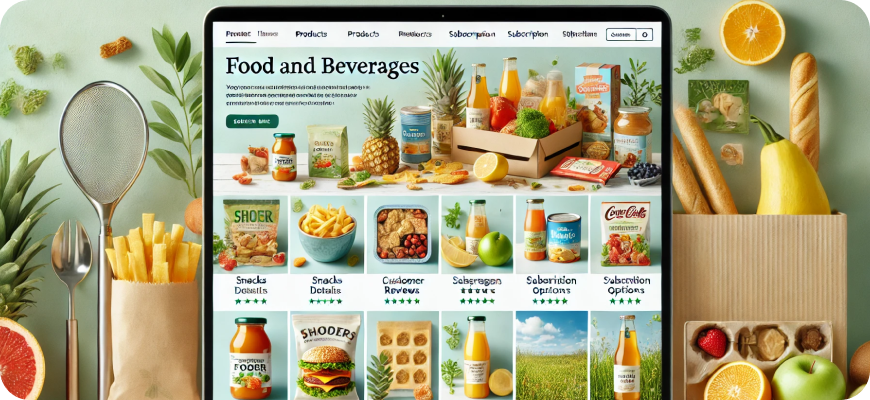
Conclusion
Success in the food and beverage e-commerce industry requires a strong focus on quality, convenience, and customer experience. By following these best practices—such as offering flexible subscriptions, leveraging personalized marketing, emphasizing sustainability, and optimizing logistics—you can build a loyal customer base and thrive in this competitive market. Providing transparency, outstanding customer support, and a seamless online shopping experience will differentiate your brand and keep customers coming back for more.

